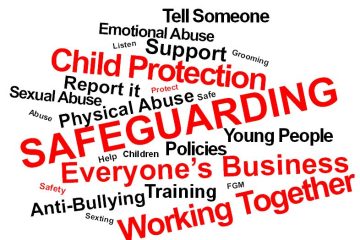Safeguarding is all about protecting children and young people from harm while giving them the opportunity to thrive in a safe and supportive environment. At the heart of this work is the school safeguarding policy—a document that lays out how a school identifies, responds to, and prevents concerns around child protection.
It is important to note that safeguarding is not just about having a well-written policy tucked away in a file. It is not a tick-box exercise or a formality for inspections. While policies are critical, they are only the beginning. Truly protecting children requires a whole-school approach—embedding safeguarding into the culture, practice, and daily life of the school.
What is a School Safeguarding Policy?
A safeguarding policy is a formal document that sets out a school’s approach to keeping children safe. It outlines key procedures for recognising and responding to safeguarding concerns, describes roles and responsibilities, and ensures compliance with statutory requirements, such as Keeping Children Safe in Education (KCSIE) in England.
The safeguarding policy acts as a guide for staff, helping them to fulfil their duty of care effectively. It provides consistency and ensures all children—regardless of background—are protected equally.
Key components of an effective safeguarding policy include Clear reporting procedures, Designated Safeguarding Leads (DSLs), Guidelines on safer recruitment, Behavioural expectations, Protocols for managing allegations, Online Safety and much more. See Basic Features of a Safeguarding Policy Here.
The Importance of a Whole-School Approach To Safeguarding
While safeguarding policies provide a foundation, their success relies on how effectively they are implemented. A whole-school approach makes sure safeguarding becomes an intrinsic part of the school’s ethos, rather than a set of isolated procedures.
Leadership and Accountability
Leadership sets the tone for safeguarding in any school. Senior leaders, governors, and DSLs must lead a culture of safety, modelling good practice and holding everyone accountable. Clear communication channels between leadership and staff are essential to ensure safeguarding priorities remain visible and actionable.
Strong leadership also encourages a culture of openness, where safeguarding is not feared but embraced as a collective responsibility.
Training and Awareness
Training is a cornerstone of safeguarding. Every member of staff—teaching and non-teaching—must understand their role in keeping children safe. Regular, high-quality training ensures staff can recognise signs of abuse, neglect, or exploitation, respond confidently and appropriately to disclosures and stay informed about legislative changes and emerging risks, such as online harm.
Beyond formal training, embedding safeguarding discussions into staff meetings, peer support, and professional development opportunities helps keep it a dynamic and evolving priority.
3. Building a Supportive Environment for Reporting Concerns
The effectiveness of any safeguarding policy hinges on how comfortable and confident people feel about reporting concerns. A supportive environment should include Clarity in procedures, Anonymity and confidentiality, Zero tolerance for retaliation.
In addition, schools should actively encourage children to speak up about worries or issues. This requires creating trusted spaces and relationships where students feel valued and safe.
Safeguarding policies are indispensable, but policies alone do not protect children—people do. It is important to move beyond compliance to create truly shielded spaces where children can flourish.
Do you know the Safeguarding Policy Of Your School?



0 Comments